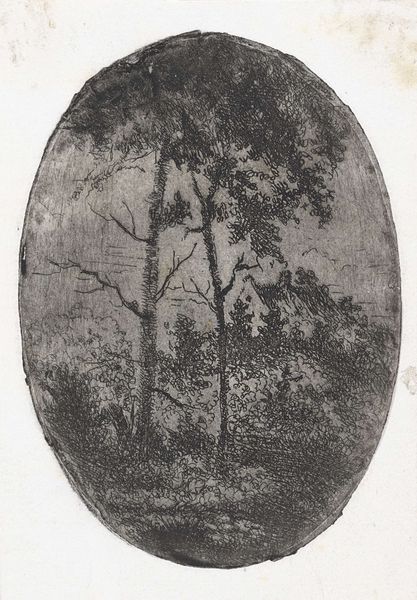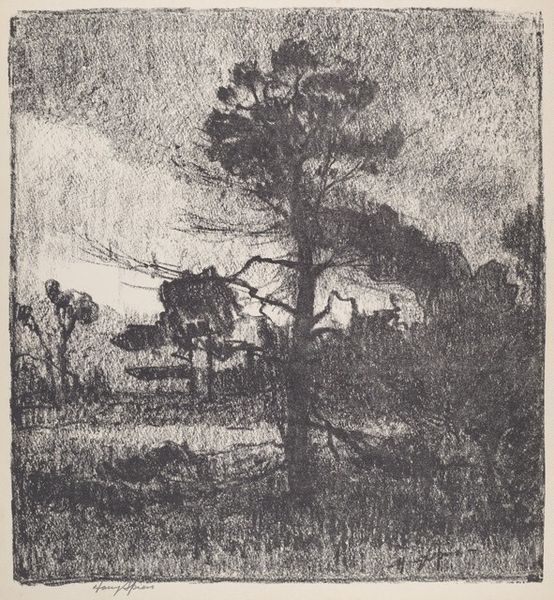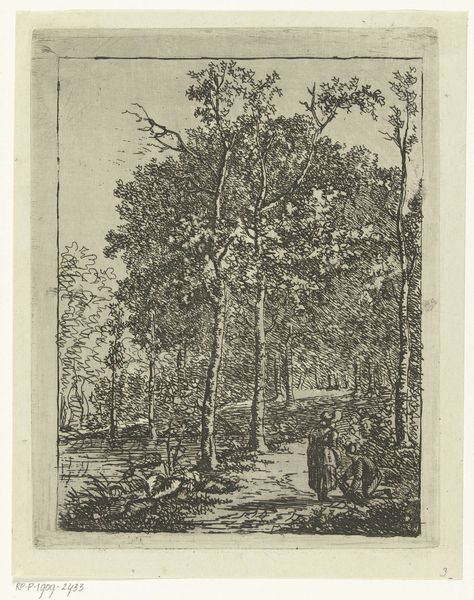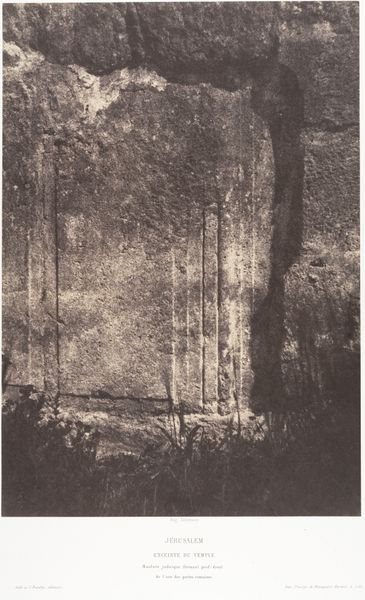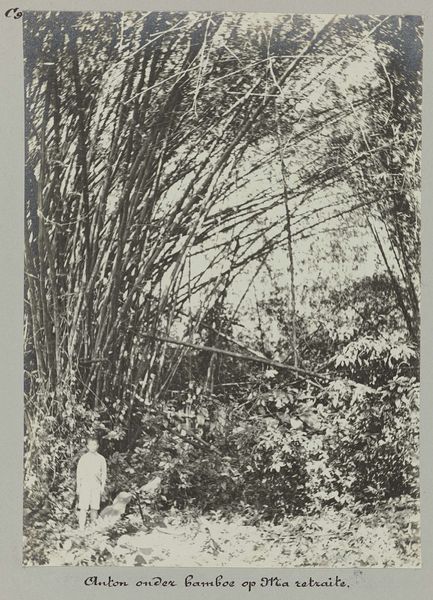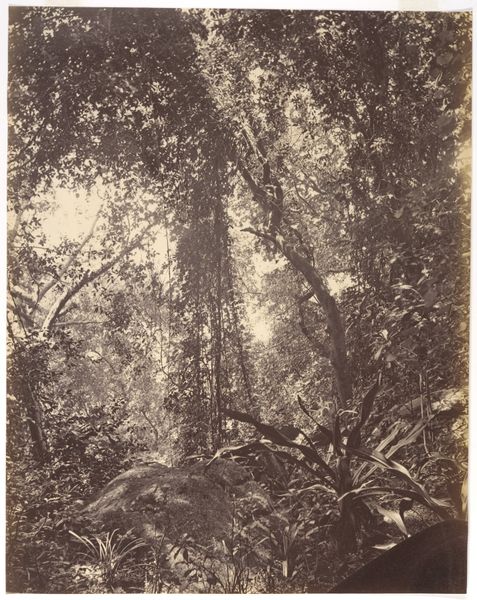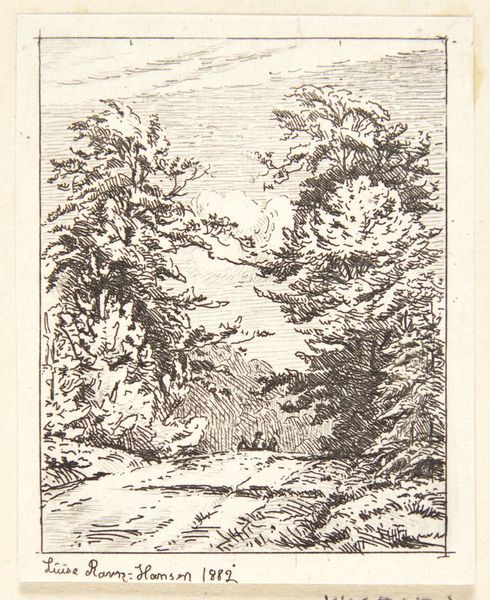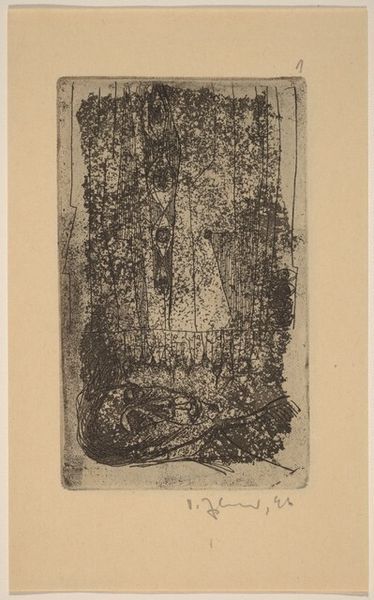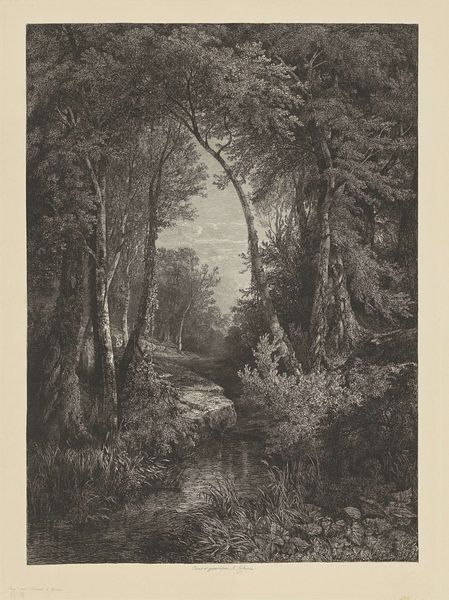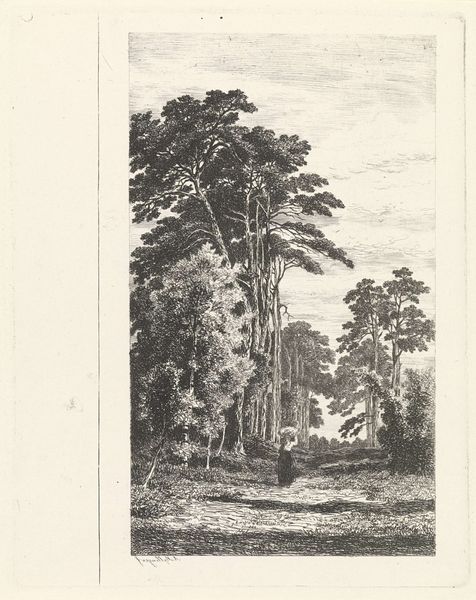
drawing, print, etching, paper
#
drawing
# print
#
etching
#
landscape
#
paper
#
romanticism
Dimensions: 259 × 205 mm (plate); 305 × 220 mm (sheet)
Copyright: Public Domain
Henri-Joseph Harpignies created this etching titled 'Shepherd Resting in a Clearing'. The process of etching is key to understanding this work. The artist covers a metal plate with a waxy, acid-resistant ground. Then, using a sharp needle, they draw into the ground, exposing the metal. When the plate is dipped in acid, the exposed lines are ‘bitten’ or corroded. The longer the plate remains in the acid, the deeper and darker the lines will be. Harpignies has used this method to build up an image of immense tonal variation. Note the density of the lines that form the foliage. They are so closely packed together that they create areas of deep shadow. This contrasts with the open, airy feel of the clearing, where the lines are much sparser. The image could be seen as a celebration of rural life. Yet the very act of etching transforms this scene into a commodity, one that can be reproduced and consumed. By focusing on the means of production, we can see how Harpignies’s idyllic image is deeply intertwined with the systems of labor and commerce.
Comments
No comments
Be the first to comment and join the conversation on the ultimate creative platform.

